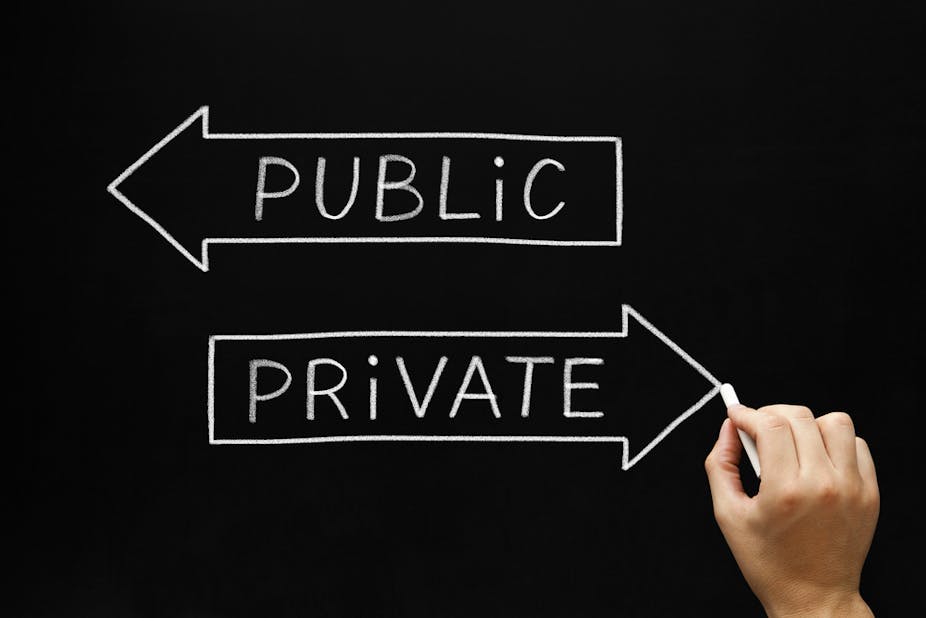The Federal Government’s Commission of Audit reports at the end of this month.
Tasked with identifying where efficiency and productivity improvements may be made across all areas of Commonwealth expenditure, it is widely thought the Commission will call for greater privatisation of government assets, with ACTU President Ged Kearney describing it as a “rubber stamp to privatise”.
For at least 40 years the debate over the state versus the market has rumbled on. Every few years it flares up again and “big government” advocates take up their position in one corner while the “small government” believers do likewise.
Those on the political right argue that privatisation is crucial to cutting costs and improving efficiency; while those on the left hit back arguing the social benefits of government provision.
However, despite the political posturing, research in the fields of public policy, social policy and commissioning suggest a debate simply over private versus public is outmoded and doesn’t reflect the reality of the type of world we actually live in. We are living in hybrid times and as such need discussion that goes beyond simply issues of ownership and management.
Many so-called government assets are not simply fully state owned or operated; take Australia Post as a case in point.

Not so simple
Earlier this week Australian Competition and Consumer Commission (ACCC) chairman Rod Sims was reported to have urged the government to consider selling off Commonwealth-owned assets such as Australia Post and Medibank private, although he later denied this saying he was only talking about the benefits of privatisation more generally. But former ACCC commissioner, Stephen King, has advocated for the sale of Australia Post, arguing the national broadband network will make letters redundant. Both rely on pretty simplistic public versus private notions.
Australia Post is far from a simple state-owned and operated entity. On the face of it, Australia Post is a government organisation: it’s a “Government Business Enterprise”, wholly-owned by government. But this label masks the complex network of activity it manages – much of it carried out by private operators, not public ones.
A visit to your local post office is the most obvious example. Australia Post has 4429 retail outlets but only 761 are truly Australia Post (or “corporate post offices”): 2895 are Licensed Post Offices (LPOs), 29 are franchises, and 744 are community postal agencies (CPAs). All those LPOs are basically small businesses, owned and operated by individuals, not staffed by government workers. And the CPAs operate in in rural and remote areas and are usually housed in other organisations such as general stores, newsagencies, chemists and even libraries.
And who is delivering your parcels? More than 3000 principle vendors are contracted to Australia Post to do that and thousands of sub-contractors sitting beneath them paid per parcel to deliver. Australia Post itself employs just shy of 33,000 people but engages with 10,000 licensees, franchisees and contractors.
And, by the way, Australia Post made a profit of A$311.9 million after tax according to its 2013 annual report and is the second most trusted brand in the country. Australia Post might still be a Government Business Enterprise, but we can no longer seriously claim it is a “public” organisation when there are such high levels of its operations undertaken by other parties.
Privatisation by outsourcing
The trend for outsourcing that has seen the externalisation of services to commercial organisations in recent years may be seen as one way in which public services have been privatised. Yet in some of these cases the wholesale outsourcing of some services has simply served to reproduce the same sorts of bureaucracies that previously existed government. For example, one of the most common complaints made against Australia’s fully out-sourced employment services system, Job Services Australia, is that it has been over-run with bureaucratic red tape. This has led some to question whether the old Commonwealth Employment Service really was significantly more rule driven than our current system and advocate major transformations of the model.
These debates are not simply a quirk of these shores and many different countries contest the issue of privatisation to greater or lesser degrees. A longstanding debate is running in England, for example, over potential privatisation of the National Health Service. Yet the NHS has never been a wholly state-run enterprise as General Practitioners (who are the gatekeepers of this system) have essentially remained small businesses since its establishment.
This is not to say the argument over who should operate our services is not an important one; it clearly is, or else it would not elicit the level of passionate debate that it does. But, the old debate of state versus private provision is unhelpful at best and misleading at worst.
Managing hybrid arrangements involves different kinds of challenges and requires different skills, capacities and abilities from managers in comparison to more traditional arrangements.
Yet, in the focus on these old debates we often miss the nuance of this debate. This does not serve our government assets, or those who work within these organisations well.
The extent to which the Commission of Audit’s findings will be able to cope with the complexity of hybridity remains to be seen. The commentary so far does not give us much hope.

